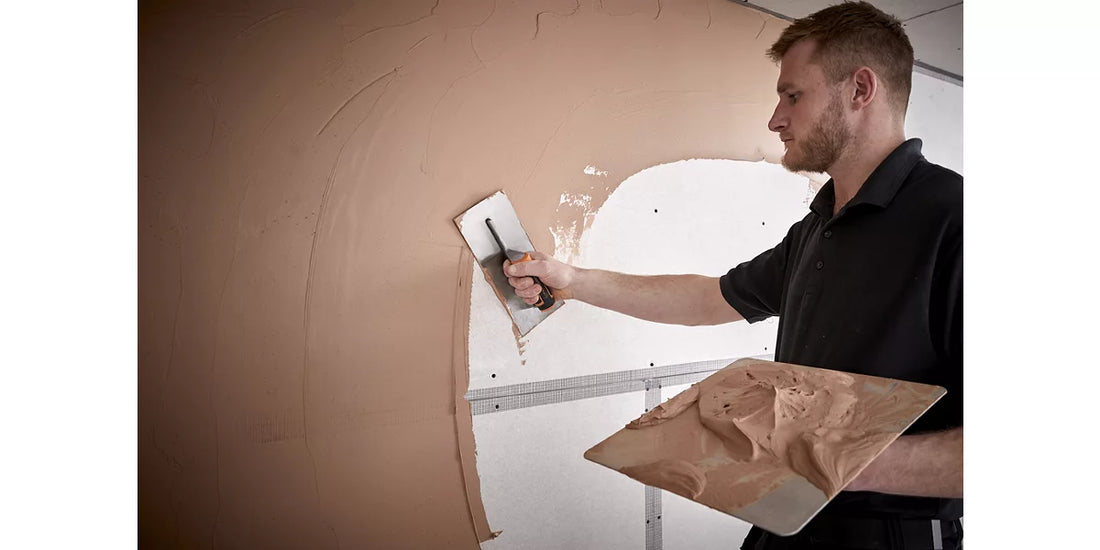
The Process of Plastering
Share
The Process of Plastering
When we talk about Plastering we are talking about the process of creating flawless, smooth walls and ceilings, a process that takes expertise and precision.
In this article, we will guide you through the Plastering process; from preparing the surface to applying the plaster and the tools you'll need for the job.
The Basics of Plastering
Plastering involves applying a layer of plaster material to walls, ceilings, or other surfaces to create a smooth and durable finish.
Plaster materials include gypsum plaster and lime plaster. Gypsum plaster is made from a mixture of gypsum powder and water. Gypsum plaster is easy to work with and sets quickly, making it ideal for small repairs or patching up damaged areas. Lime plaster is made from limestone and offers excellent breathability and flexibility. It’s commonly used in historic preservation projects due to its ability to withstand moisture without cracking or deteriorating.
Surface Preparation
Before applying any plaster, you will need to make sure the surface you are working with is clean and free of any dirt or debris. Preparing the surface is a crucial step in the process of plastering and can determine the final outcome of your work. Making sure the surface is clean also ensures proper adhesion and a smooth finish. If the surface is not clean then the plaster won't bond effectively and will likely crack and peel in the future.
To achieve a clean surface you will need to remove all loose paint, wallpaper and/or old plaster using a scraper and/or wire brush (Accessories). You will then need to wash the surface with a mild detergent to rid any grease or grime. After rinsing and allowing it to completely dry you need to inspect for any cracks or holes that may need repair. These need to be filled using a filler compound and sanded smooth (Hand Sanders) once dry.

Applying the Plaster
Once the surface is prepared you can start to apply the plaster for a smooth and even finish. Make sure you select the right type of plaster for the project you are taking on. There are various types of plaster available, such as gypsum based (MultiFinish, BoardFinish, FastSet Finish) and cement based (DriCoat, ) each with their own properties and applications.
To apply the plaster mix, use a TROWEL to spread it evenly over the surface, working from top to bottom and overlapping each layer slightly for a seamless result. Keep in mind that sanding may be required between coats to achieve that smooth, flawless finish. To ensure the most professional outcome make sure you are patient and meticulous.

Drying Time
Once you have completed the process you will need to wait patiently for it to dry completely before moving on. This step is crucial in achieving a strong and long-lasting finish. If you rush the drying process this can compromise the integrity of the plaster. Recommended drying time varies depending on factors such as room temperature and humidity levels.


